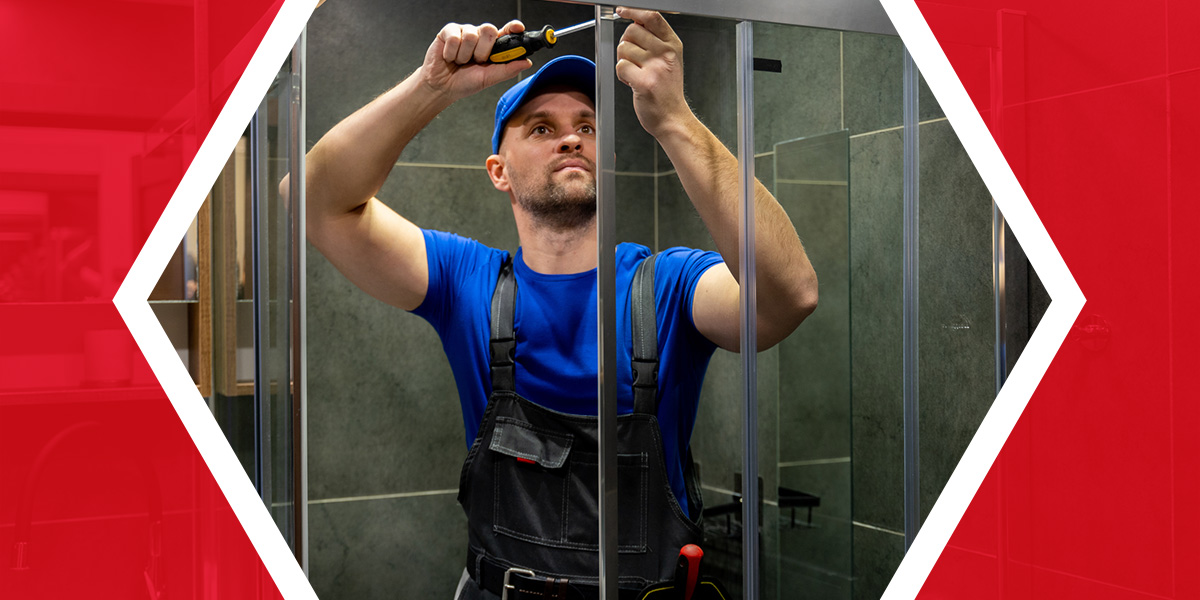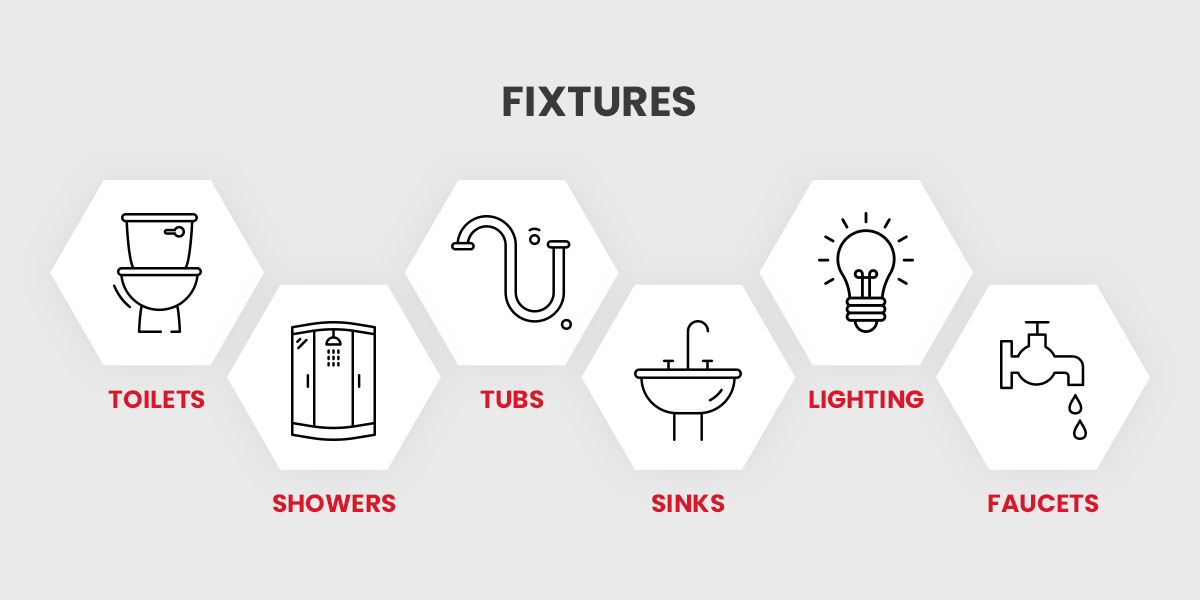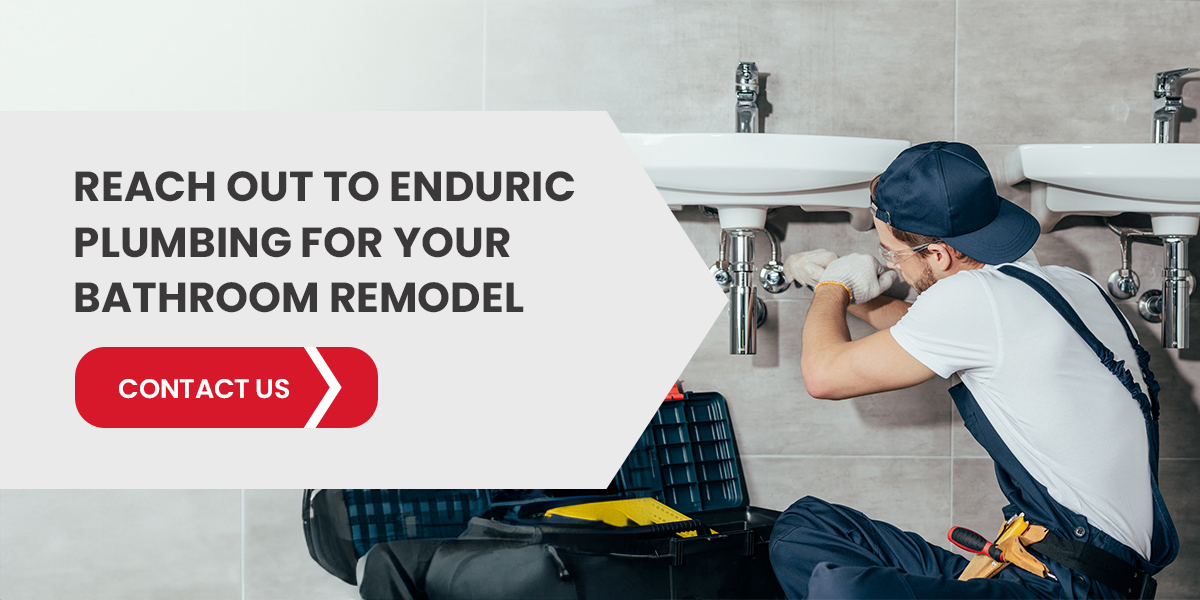
July 8, 2024
If you want to plan a bathroom renovation, there are a few key considerations involved. Explore what goes into a bathroom remodel, from the planning stages to the final touches.
Getting Started With Your Remodel
Once you’ve decided your bathroom needs a refresh, the first thing to consider is whether you’re remodeling your bathroom for aesthetic reasons or to improve functionality. When planning a bathroom remodel, you can easily do both! While your main goal might be to get rid of that old-school wallpaper and install new low-maintenance tiles in the shower, a remodel is also an excellent opportunity to ensure your space is functional for many years to come.
Before starting any demolition, check your plumbing, fixtures and pipes to note any signs of age, wear or leaks. Some common signs you need bathroom plumbing renovations include:
- Clogged drains
- Low water pressure
- Dripping faucets
- Noisy pipes
- Faulty water heater
- Running toilet
A plumber can do a full inspection to identify any problem areas, but they’re also a helpful resource when changing the space’s layout. If you want to move or add any plumbing fixtures, it’s essential to get an expert’s input before you start — they’ll be able to advise you on the various possibilities and how that will impact the cost.
The following are the first steps to planning a bathroom renovation:
- Contact a plumber: Reach out to a plumbing company with experience in bathroom remodels.
- Get a detailed quote: Find a transparent plumbing company that is upfront about the cost of their services. Never sign anything before seeing a detailed estimate.
- Discuss and approve the estimate: You can ask the estimator questions about the quote to get a full picture of what work needs to be done and how that influences the cost.
- Schedule services: The comprehensiveness of your remodel will determine how long the remodel will last.
- Prepare for the remodel: Before starting, remove your belongings from the space and clean thoroughly.
Bathroom Remodel Plumbing Considerations
Take the following into account when planning your bathroom remodel:
1. Costs
The main factors that will influence your remodel budget include:
- Plumbing
- Materials
- Labor
- Fixtures
- Cabinets
- Permits
Bathroom renovation plumbing costs vary according to the amount of changes and updates you’re making. Moving plumbing lines will generally be more costly than updating a few fixtures, so budget accordingly. While hiccups happen in any renovation, plumbing work will come with an initial estimate to help you plan for all the associated costs.
Price transparency is a sure sign of a reputable plumbing company. Ensure the plumber comes by for an inspection before starting any work, and get an estimate in writing.
2. Fixtures

You have a lot of choices when it comes to bathroom fixtures, both from a functional and aesthetic perspective. Your fixture options include:
- Toilets: You can choose from one-piece, two-piece and wall-hung toilets, as well as water-saving flushing capabilities.
- Showers: Shower-tub combos are some of the most popular, but other options include walk-in and alcove showers. Shower heads also come in many varieties, including detachable, rain and multi-head.
- Tubs: Some tubs come with attached showers, but you could also go for a freestanding, corner or alcove tub made of fiberglass, stone, cast iron or acrylic.
- Sinks: Types of sinks include pedestal, wall-mounted, vessel and undermount sinks. There are freestanding sinks as well as those attached to vanities. You can choose from materials like glass, ceramic, porcelain and stainless steel.
- Lighting: Lighting is essential in a bathroom, so decide if you want overheads, sconces, vanity lights or a combination. Modern bathrooms might include LED lighting around mirrors or under cabinets for a special ambiance.
- Faucets: Faucets come in many styles, materials and finishes. In most cases, it’s best to match the finish on your faucets and lighting to avoid clashing metals and lend a cohesive design to a space.
The amount of space you have to work with will impact your fixtures — a freestanding tub requires plenty of room and its own plumbing, while a shower-tub combo has a smaller footprint.
3. Layout
When deciding on a bathroom layout, determine how many people will use it regularly. Smaller spaces with high traffic might need more creative storage options, such as under-sink cabinetry and hanging shelves. If you’ve got more square footage to work with, you can add things like double vanities, standing tubs and separate water closets.
Changing up the layout of your space will have consequences on the plumbing, especially if you’re planning to move around any fixtures. Transferring a toilet or sink to a different part of the room will require removing and installing new pipes, fittings and connections — not to mention cutting through drywall and potentially rerouting your electrical. This is a complex task, and while a new layout can make a huge difference in the feel and functionality of your space, a professional licensed plumber is necessary for these updates.
4. Permits
If you need work done on the plumbing or electrical in your bathroom, it’s important to determine if you need permits for the updates. A licensed plumber or electrician can advise you on the necessary steps and associated fees.
Commercial Bathroom Remodels
Remodeling a bathroom in a commercial building necessitates special considerations, such as:
- Accessibility: The Americans with Disabilities Act (ADA) and other regulatory bodies set specific accessibility standards for bathrooms in businesses and public buildings.
- Water-saving technology: Features like dual-flush toilets and motion-activated sinks can save water and reduce utility costs.
- Drainage: Many businesses require special drainage filters and receptacles to control hazards and contaminants.
Since commercial buildings often have more bathrooms and, therefore, more plumbing fixtures, business owners should look for a plumbing company that can efficiently accommodate their service needs. While a licensed plumber is qualified to do the work, a single worker with one van and a few tools may not be up to a larger job.
Our Top Tips
Here are a few things to keep in mind as you proceed with your bathroom remodel:
- Plan for disruptions: Not all remodels will impact your ability to use your bathroom, but plan for this in case there are schedule disruptions or unexpected repairs. Your plumber will advise you if and when the water supply needs to be turned off so you can create a workaround.
- Be aware of scams: While uncommon, plumbing scams exist, and they can cost you time and money. Be wary of anyone who comes to your door offering plumbing inspections or repairs, and make sure you check credentials before allowing anyone to do any plumbing work. Even better — read customer testimonials to verify you’re working with a reputable company.
- Don’t neglect ventilation: Ventilation is essential in bathroom spaces. A properly working fan helps remove moist air from the bathroom, reducing your chances of collecting mildew and mold.
- Choose the right water heater: Correctly sizing your home’s water heater will ensure you have enough hot water to fulfill the peak usage hours.
- Get regular maintenance: While responding to issues quickly is important, maintaining your bathroom with preventive plumbing maintenance means you can catch problems before they become costly fixes.
Reach out to Enduric Plumbing for Your Bathroom Remodel
The plumbers at Enduric Plumbing are professional, courteous and reliable. We pride ourselves on our commitment to customer satisfaction and friendly service, so you know your bathroom remodel is in good hands. We are a bonded, licensed and insured plumbing company, and our experienced plumbers provide comprehensive estimates and labor warranties.
Contact us to discuss ideas for your new bathroom, or browse our photo gallery to see our expertise in action.



